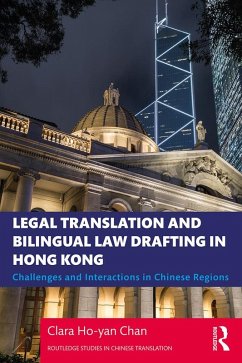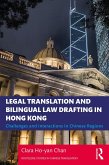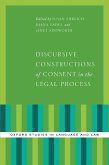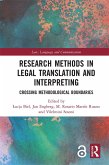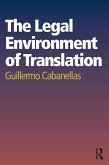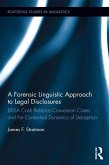The study mainly examines the challenges posed to English-Chinese translation in the past three decades by elaborate drafting and terminological equivalence, and offers educational and research solutions. Its primary goals are to create legal Chinese that naturally accommodates common law concepts and statutes from the English legal system and to reconcile Chinese legal terms from the different legal systems adopted by Hong Kong, Mainland China and Taiwan. The new directions in legal translation and bilingual law drafting in Hong Kong will have implications for other Chinese regions and for the world.
The book is intended for scholars, researchers, teachers and students of legal translation and legal linguistics, legal translators, lawyers and legal practitioners who are engaged in translation, as well as all persons who are interested in legal language and legal translation.
Dieser Download kann aus rechtlichen Gründen nur mit Rechnungsadresse in A, B, BG, CY, CZ, D, DK, EW, E, FIN, F, GR, HR, H, IRL, I, LT, L, LR, M, NL, PL, P, R, S, SLO, SK ausgeliefert werden.
--- SIN King-kui, Dean, Faculty of Arts and Humanities, UOW College of Hong Kong
The development of a bilingual legal system in Hong Kong since the 1980s has posed important challenges for legal translation and legal drafting. This book provides a comprehensive study of the subject, drawing on the experience of mainland China and Taiwan in the use of the Chinese language. I think it is an extremely useful book for both general readers interested in the use of Chinese in Hong Kong law, as well as students and practitioners of English-Chinese legal translation and drafting.
--- Professor Albert H.Y. Chen, Faculty of Law, University of Hong Kong
The importance of language in the context of law hardly requires elaboration. Hong Kong the only common law jurisdiction where legislation is enacted in both Chinese and English. Legislation aside, legal translation plays an important role in enhancing access to justice in Hong Kong. Viewed thus, his book by Professor Clara Chan is a helpful addition to the literature and research in this area, and will be an indispensable addition to the bookshelf of those interested in law and language.
--- Rimsky Yuen, GBM, SC, JP, Barrister - Senior Counsel

